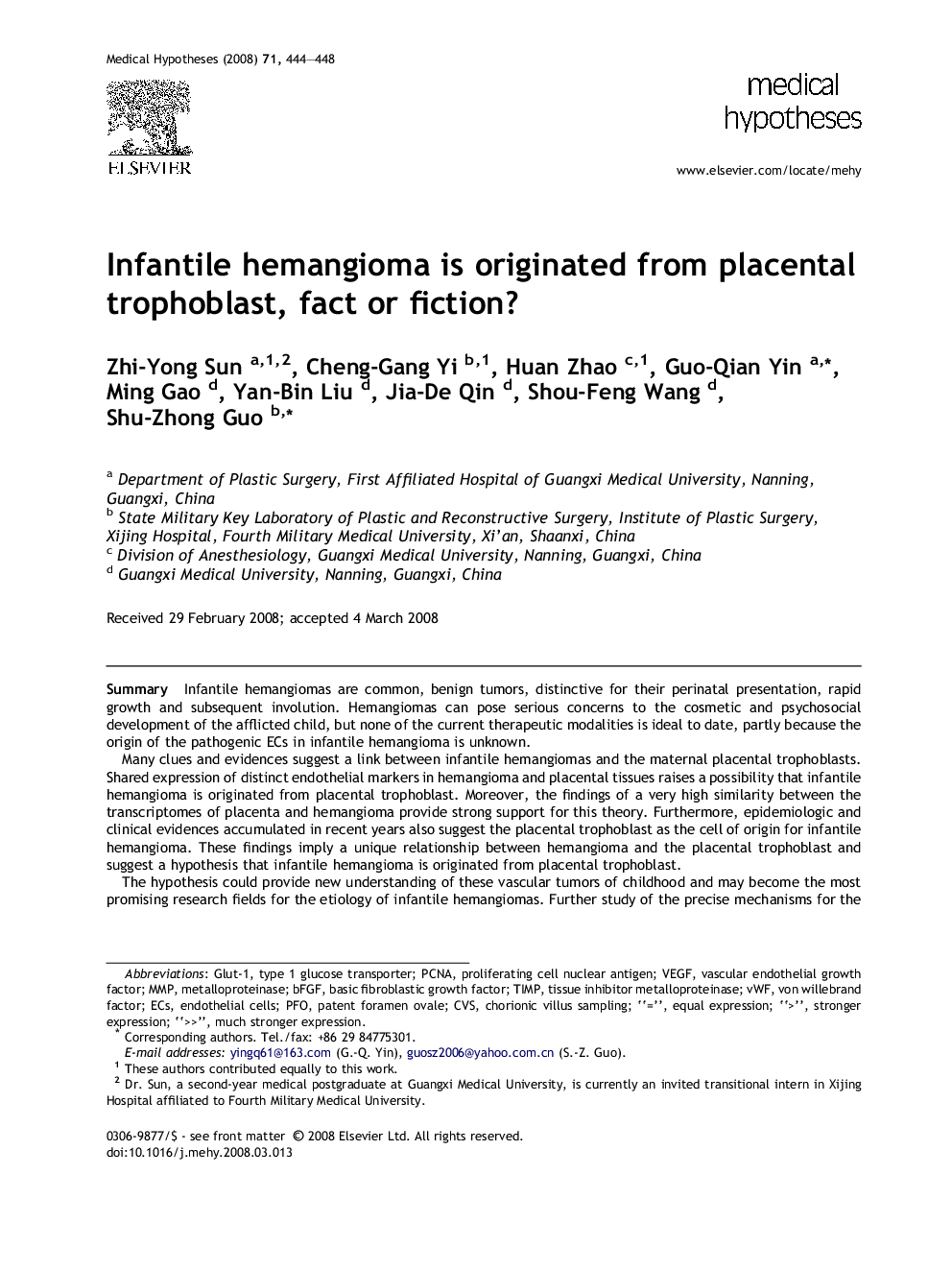| Article ID | Journal | Published Year | Pages | File Type |
|---|---|---|---|---|
| 2491689 | Medical Hypotheses | 2008 | 5 Pages |
SummaryInfantile hemangiomas are common, benign tumors, distinctive for their perinatal presentation, rapid growth and subsequent involution. Hemangiomas can pose serious concerns to the cosmetic and psychosocial development of the afflicted child, but none of the current therapeutic modalities is ideal to date, partly because the origin of the pathogenic ECs in infantile hemangioma is unknown.Many clues and evidences suggest a link between infantile hemangiomas and the maternal placental trophoblasts. Shared expression of distinct endothelial markers in hemangioma and placental tissues raises a possibility that infantile hemangioma is originated from placental trophoblast. Moreover, the findings of a very high similarity between the transcriptomes of placenta and hemangioma provide strong support for this theory. Furthermore, epidemiologic and clinical evidences accumulated in recent years also suggest the placental trophoblast as the cell of origin for infantile hemangioma. These findings imply a unique relationship between hemangioma and the placental trophoblast and suggest a hypothesis that infantile hemangioma is originated from placental trophoblast.The hypothesis could provide new understanding of these vascular tumors of childhood and may become the most promising research fields for the etiology of infantile hemangiomas. Further study of the precise mechanisms for the placental trophoblast originated hemangiomas will produce new preventive strategies and therapeutic avenues, possibly immunologic treatment, to the very difficult problem.
